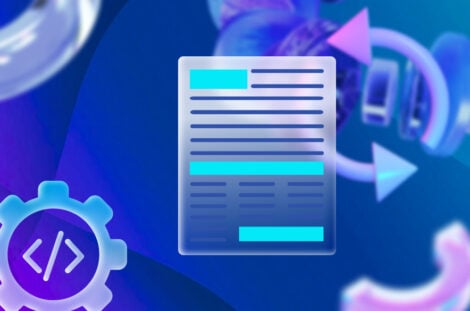
Introduction
Python is a hugely popularized language that is backed up by its large active community of contributors from diverse sources and areas of the field. It is a high-level, general-purpose language. Additionally, Python is compatible with the functional programming paradigm.
Functional programming uses of functions as the basic building blocks of software. It emphasizes what needs to be done, in contrast to imperative programming, which places emphasis on how to complete a task. This allows developers to write code that is clearer and more declarative.
Python offers a wealth of modules and frameworks that let programmers use the principles of functional programming to create sophisticated and reliable applications. functools, itertools, and operator are a few of the well-known Python functional programming libraries.
In the following article, we will discuss and find out the advantages of functional programming, the concepts it supports, best practices, and mistakes to avoid when writing a Python program. We will also demonstrate the concepts with concrete examples in Python.

What is Functional Programming?
The foundation of functional programming is the mathematical idea of a function, which accepts inputs and returns an output without changing any state. Functions can be assigned to variables, supplied as arguments to other functions, and returned as values in functional programming since they are recognized as first-class citizens. It is simpler to test and debug code using this compositional method and to reason about program behavior.
Immutability, referential transparency, higher-order functions, recursion, and lazy evaluation are among the fundamental ideas of functional programming. Functional programmers may create declarative, composable, and simple-to-understand code thanks to these ideas.
Instead of changing the state, functional programming focuses on computing values. Therefore, there are no sides to functions.
Why Use Functional Programming in Python?
The functional programming paradigm for Python has several benefits that make it useful for developers. Some of the benefits include:
- Concise and expressive code: Developers can write code that is clear, expressive, and simple to read and alter by using functional programming. Python’s higher-order functions give programmers a boilerplate of ready-to-modify code that can easily have new code added as needed. hence allowing for faster growth.
- Easier to reason about: Pure functions, which have no side effects and give the same result for the same input, are emphasised in functional programming. This makes it simpler to think about a function’s behaviour and how it affects the rest of the programme.
- Parallelism and concurrency: By minimizing mutable states and side effects, functional programming makes parallelism and concurrency possible. This makes writing code that can run in parallel or on multiple threads easier.
- Testability: Pure functions, which are simpler to verify because they have no side effects, are promoted by functional programming. Writing unit tests and ensuring the accuracy of a programme are made simpler as a result.
- Improved modularity and reusability: Small, modular functions that can be reused in various programme sections are emphasized by functional programming. As a result, the code becomes more modular and is simpler to maintain and refactor.
- Interoperability with other paradigms: Functional programming is one of the many programming paradigms that Python supports. This implies that, depending on the particular needs of a program, developers can combine and contrast various paradigms.
Functional Programming Concepts in Python
Python provides several functional programming concepts that allow developers to write functional code.
- Higher-order functions: These are code stubs that accept the other code stubs as input and produce other code stubs as output. They make it possible for programmers to create reusable, composable code
- Anonymous functions: There is no name for these functions. They can be utilized in higher-order functions and are generated using the lambda keyword.
- Immutable data structures: These are data structures that, once constructed, cannot be changed, like tuples and frozensets. Immutable data structures let programmers create thread-safe, more understandable code.
- Generators: These are operations that permit pausing and restarting. Lazy evaluation is made possible by generators, which is advantageous for processing a lot of data.
- Decorators: These are the functions that change how other functions behave. Decorators let programmers extend the functionality of already-written functions without changing the source code.
# Define a decorator function that adds timing information to a function import time def time_it(func): def wrapper(*args, **kwargs): start = time.time() result = func(*args, **kwargs) end = time.time() print(f"{func.__name__} took {end - start} seconds to run.") return result return wrapper # Use the time_it decorator to time how long it takes to run a function @time_it def my_function(): time.sleep(1) my_function() # Output: my_function took 1.0000739097595215 seconds to run. - First-class functions: As first-class citizens, Python functions can be assigned to variables, used as arguments for other functions, and have values returned to them. This makes it simple to build strong function compositions and higher-order functions.
- Recursion: By dividing a larger problem into smaller subproblems, one can use this strategy to solve it. Python’s recursion feature allows for the creation of elegant and terse code for intricate algorithms.
Python developers can write code that is more condensed, expressive, and defensible by leveraging these functional programming techniques. They can also use the full potential of Python’s built-in functional programming features to produce programs that are more modular and reusable.
Best Practices for Functional Programming in Python
- Use immutable data structures: Immutable data structures are the one where oject once created can not be modified under any circumstances, such as tuples and frozensets, are important in functional programming because they can be safely shared between functions without the risk of unintended side effects. Mutable data structures can introduce bugs and make it harder to reason about your code. Immutable data structures guarantee safety.
# Create an immutable tuple my_tuple = (1, 2, 3) # Attempt to modify the tuple my_tuple[0] = 0 # Raises TypeError: 'tuple' object does not support item assignment # Create a frozenset my_tuple = (1, 2, 3) # create a tuple my_frozenset = frozenset([4, 5, 6]) # create a frozenset
- Avoid global state: Global state can make it more difficult to reason the code writen by you and can introduce bugs. Instead, use function arguments and return values to pass data between functions.
def calculate_sum(a, b): return a + b def main(): x = 2 y = 3 result = calculate_sum(x, y) print(f"The sum of {x} and {y} is {result}") if __name__ == "__main__": main() - Use higher-order functions: Higher-order functions are functions that take other functions as input or return functions as output. They allow you to write code that is composable and reusable. Python provides several built-in higher-order functions, such as map(), filter(), and reduce(), which are commonly used in functional programming.
# Define a higher-order function that takes a function and applies it to a list of numbers def apply_function(numbers, function): return [function(number) for number in numbers] # Define a function to square a number def square(number): return number ** 2 # Use the apply_function function to square a list of numbers numbers = [1, 2, 3, 4, 5] squared_numbers = apply_function(numbers, square) print(squared_numbers) # Output: [1, 4, 9, 16, 25] - Use recursion: By using power of recursion we can solve the problem by breaking them down into smaller sub-problem.Python do support the recursion and helps to write elegant and concise code even for complex problem out there.
# Define a recursive function to calculate the factorial of a number # classic factorial example here def factorial(n): if n == 0: return 1 else: return n * factorial(n - 1) # Use the function to calculate the factorial of 5 result = factorial(5) print(result) # Output: 120 - Use lambda functions: Anonymous functions that can be used to create simple one-liner functions are called as Lambda functions in Python. They are often used in conjunction with higher-order functions, such as map(), filter(), and reduce(), to write concise and expressive code.
# Define a lambda function to square a number square = lambda x: x ** 2 # Use the lambda function to square a list of numbers numbers = [1, 2, 3, 4, 5] squared_numbers = list(map(lambda x: x ** 2, numbers)) print(squared_numbers) # Output: [1, 4, 9, 16, 25]
- Write pure functions: A pure function is a function that has no side effects and always returns the same output for the same input. In other words, a pure function does not modify any external state or variables and only operates on its input parameters. Pure functions are important in functional programming because they are predictable and easy to reason about, which makes them easier to test, debug, and maintain.
def add(a, b): return a + b - Use generators: Generators are functions that can be paused and resumed. They enable lazy evaluation, which can be useful for processing large amounts of data. By using generators, you can avoid loading all data into memory at once and process it in a more memory-efficient manner.
# Define a generator function to generate the Fibonacci sequence def fibonacci(): a, b = 0, 1 while True: yield a a, b = b, a + b # Use the generator function to generate the first 10 numbers in the Fibonacci sequence fib = fibonacci() fib_numbers = [next(fib) for _ in range(10)] print(fib_numbers) # Output: [0, 1, 1, 2, 3, 5, 8, 13, 21, 34] - Test your code: Testing is important in functional programming because it can help you catch bugs early and ensure that your functions behave correctly. Write test cases for your functions and use tools like pytest to automate your tests.
def calculate_sum(a, b): return a + b def test_calculate_sum(): assert calculate_sum(2, 3) == 5 assert calculate_sum(0, 0) == 0 if __name__ == "__main__": test_calculate_sum()
Common Functional Programming Mistakes in Python and How to Avoid Them?
Functional programming is a powerful programming paradigm that emphasizes the use of pure functions, immutable data, a declarative programming style, and emphasizes testing. However, even experienced developers can make some common functional programming mistakes in Python. It is important to avoid the most common mistakes. We will discuss some of these mistakes and how to avoid them.
- Modifying mutable data structures: The use of immutable data structures is one of the main tenets of functional programming. However, Python offers a number of mutable data structures that can be changed while still in use, such as lists and dictionaries. A mutable data structure’s modification can result in unexpected behavior and make the code challenging to understand. Use immutable data structures or duplicate mutable data structures before making changes to them to prevent making this error.
- Using global variables: Code that uses global variables may be challenging to interpret and test. Avoid utilizing global variables entirely when using functional programming. Instead, transmit data across functions using function arguments and return values.
- Using loops instead of higher-order functions: Although they are frequently used in imperative programming, loops can make the code more difficult to read and maintain. When manipulating data collections in functional programming, it is preferable to use higher-order functions like map, filter, and reduce. These functions offer a declarative means of communicating the code’s intent and may facilitate reasoning about it.
- Not taking advantage of lazy evaluation: A method known as lazy evaluation holds off on evaluating an expression until its value is actually required. Generators and iterators can be used in Python to implement lazy evaluation. Lack of use of lazy evaluation might result in increased memory utilization and sluggish performance. Use generators and iterators when working with huge data sets to avoid making this error.
- Not using recursion: Recursion is a fundamental idea in functional programming and a potent tool for declarative problem-solving. But if the recursion depth is too great, Python has a default recursion limit that can be quickly reached. Use tail recursion or change recursive algorithms to iterative ones to avoid making this error.
Advantages of Functional Programming in Python
- Predictability: It’s crucial to have predictable code since it makes testing and debugging easier. When a function includes side effects, it can be more challenging to predict how it would act in certain circumstances. Pure functions are essential to functional programming because they make it simple to predict a function’s result given a specific input. Proving advantage to Developer.
- Modularity: Functional programming facilitates the simpler avoidance of errors brought on by mutable states and side effects through the use of pure functions and immutability.
- Concurrency & Parallelism: Due to the simplicity of creating multi-threaded or multi-process applications the functions can run concurrently without running the danger of colliding. Making no issue for race situations and synchronization problems are not a concern because functions do not depend on any external state. Additionally, Functional programming promotes the use of immutable data structures and encourages writing pure functions, which makes it easier to write parallel and concurrent code.
- Code optimization & Refactoring: Since functions have predictable outputs, the compiler or interpreter can make assumptions about how the function will behave and optimize accordingly. This makes functional programming a good choice for applications that need to be highly performant.
- Readability, Reusability & Maintainability: Small, reusable functions can be used by developers to build more complex programs thanks to functional programming. Additionally, it promotes the use of functions and discourages the use of side effects, making the code easier to read and understand. This reduces the complexity of the code and makes it simpler to maintain.
- Testability: With the use of pure functions, functional programming makes it easier to test code, as it ensures that the output of a function only depends on its input.
- Avoidance of Bugs: By Using the above mention methods when combined helps to avoid bugs easy for the developer to detect any bugs and resolve them.
Conclusion
Let’s sum up by saying that functional programming is a paradigm for computer programming that, when used correctly, may be quite advantageous to Python developers despite its two sides.
Pure functions, immutability, and declarative programming style are important, as highlighted by the programming paradigm. It benefits developers in a variety of ways, including by making code more expressive, maintainable, testable, and readable. Python developers may fully realize the benefits of functional programming and build superior software by adhering to best practices, utilizing the proper libraries and tools, and constantly expanding their knowledge and expertise.
It might not be appropriate for all issue domains, though, and may call for a different way of approaching problems. Developers should follow best practices, stay away from common blunders, and make use of the right libraries in order to produce effective functional code.










